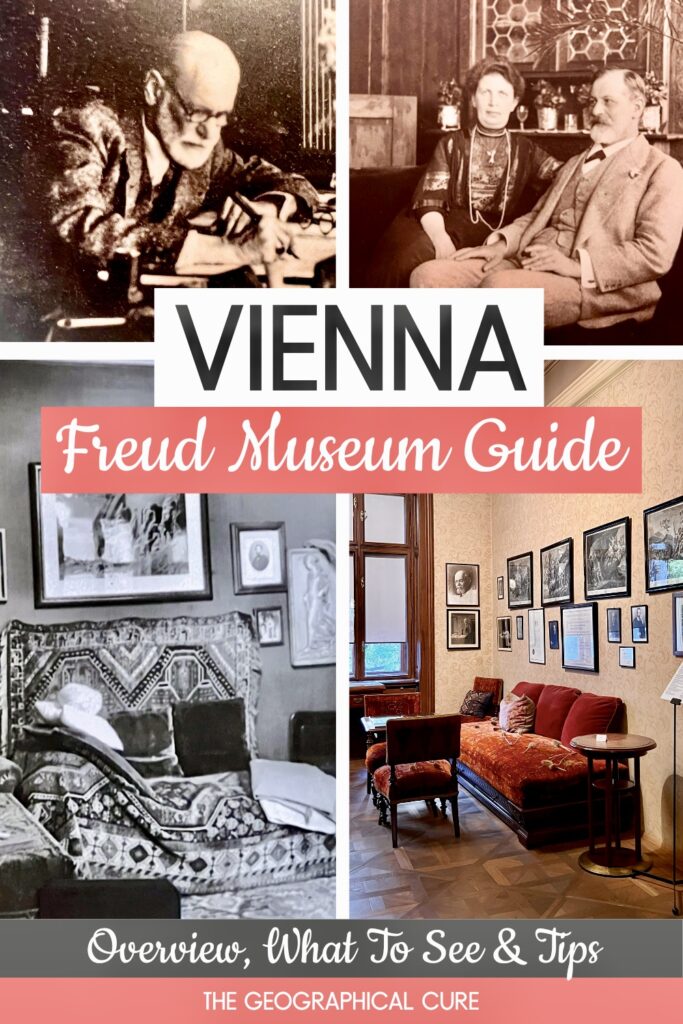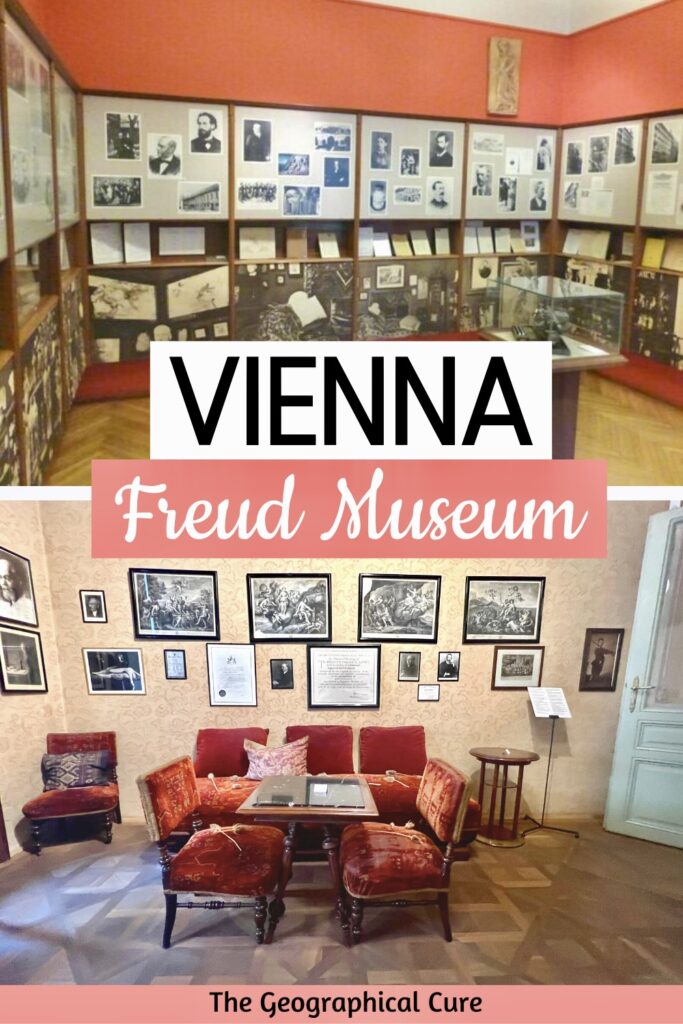The Freud Museum in Vienna is a remarkable institution dedicated to the life and work of the legendary Sigmund Freud, the founder of psychoanalysis.
This is where Freud lived and practiced for 47 years before fleeing from the Nazis in 1938. His eponymous museum gives you a glimpse into his life and practice.
I found it to be a well curated and informative museum well worth visiting. If you’re a history buff or interested in psychology, the museum is a must visit in Vienna.
>>> Click here to book a skip the line ticket for the Freud Museum
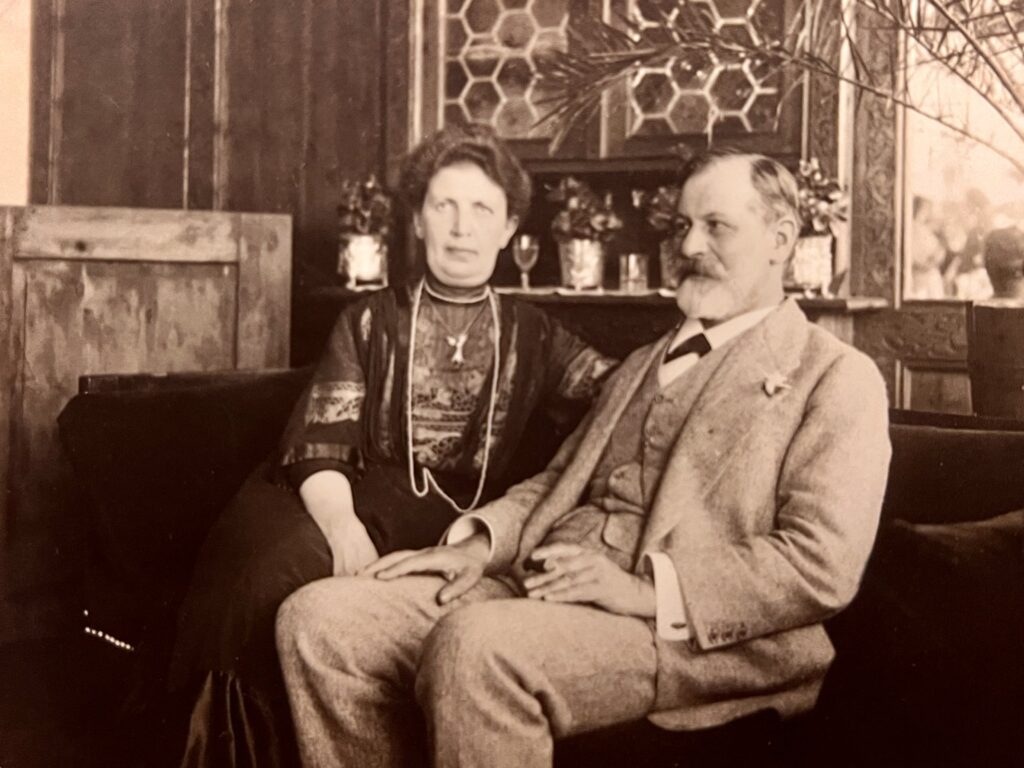
Overview Of The Freud Museum
In this guide, I’ll share what you can explore at the Freud Museum. The museum spans two floors, showcasing the family’s private rooms and the practices of Sigmund and Anna Freud.
During your visit, you’ll ascend the same historic staircase that Freud and his patients once used. Along the way, a timeline highlights significant events from Freud’s life and work.
There’s no set order for viewing the exhibition. At the top of the stairs on the mezzanine level, you’ll choose between exploring his private apartments (on the left) or his professional practice area (on the right).
To enter, you’ll need to ring the doorbell. It’s a unique experience that makes you feel like an actual patient arriving for analysis.
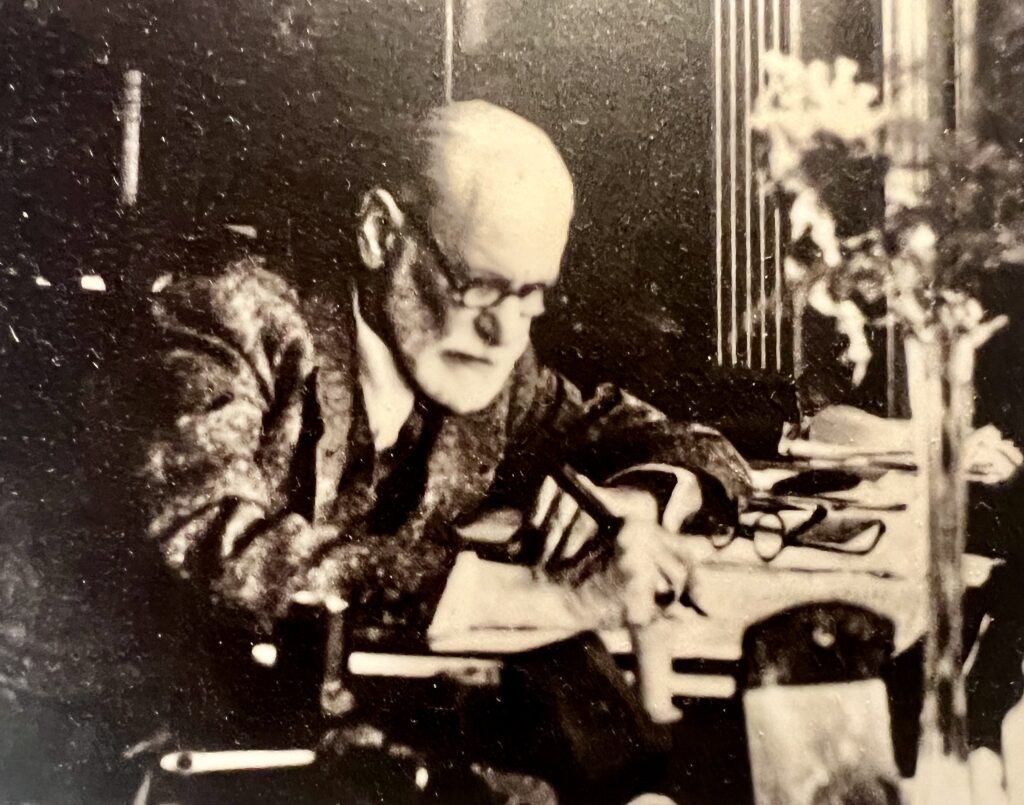
Here what you’ll see on a visit:
- Freud’s practice rooms (waiting room, consultation room, study)
- Freud’s apartment (entrance hall, gentlemen’s salon, bedrooms)
- Anna Freud’s bedroom and treatment room
- Ground level: special exhibitions on conceptual art
- Exhibits: possessions, artifacts, photographs, photographs, books
- Information on the theory and practice of psychoanalysis
There are a few original pieces of furniture, mostly in the waiting room. But most are missing, a testament to the specter of Nazi oppression.
The museum was recently expanded and renovated over 18 months to the tune of $4 million, re-opening in 2020. Each room has information panels on history of the room itself and display cases on psychoanalysis.
You can also scan QR codes to get more information. Information is in both English and German.
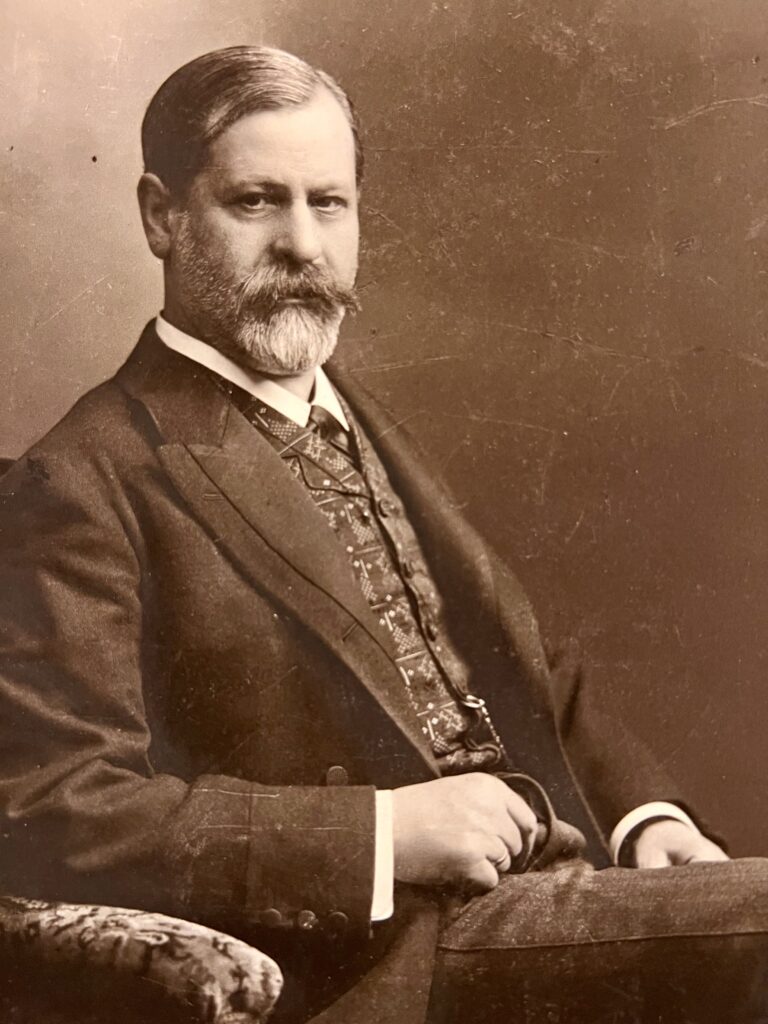
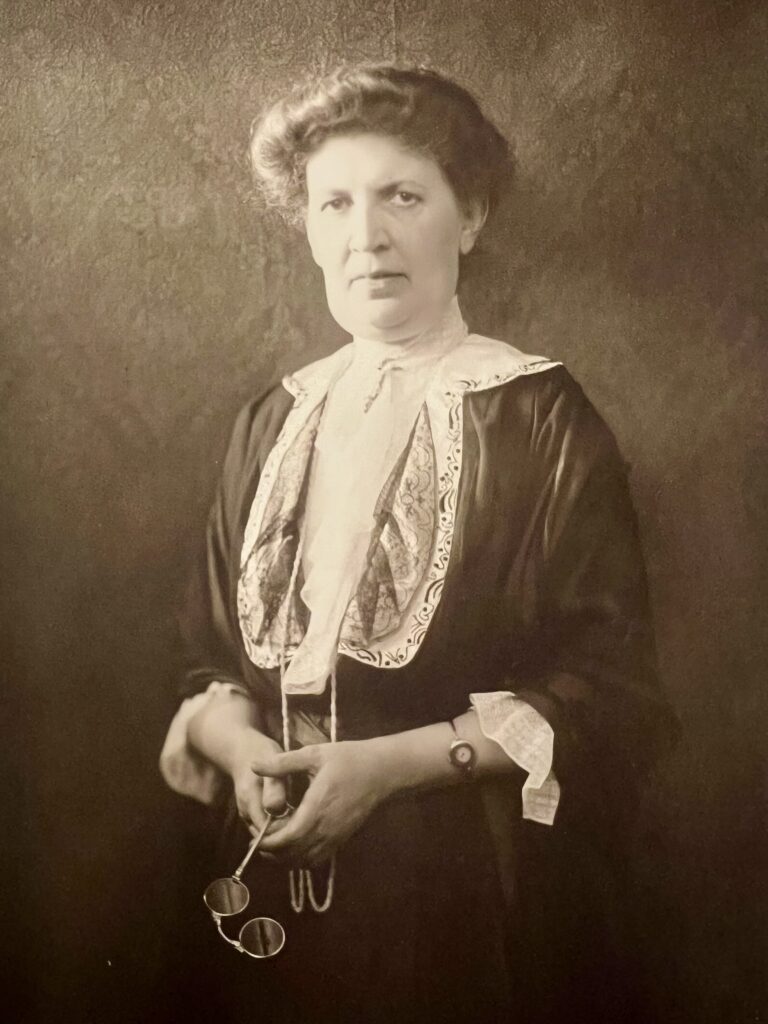
Who Was Sigmund Freud?
Sigmund Freud, born in 1856, was a pioneering neurologist who founded psychoanalysis. His work transformed how we understand the human mind, introducing concepts like the unconscious and the Oedipus complex.
Freud believed that hidden desires and conflicts strongly shaped human behavior. He aimed to challenge Victorian-era views on human sexuality. These ideas were radical at the time.
He also developed the famous psychoanalytic method called free association. Using the “talking cure,” patients freely shared thoughts to uncover repressed memories and emotions.
Freud lived and worked in his house for almost five decades, from 1891 to 1938. There, he penned over 25 books, numerous articles, and almost 20,000 letters. His contributions revolutionized psychology.
The museum displays artifacts, books, and personal items. They reveal his love for dogs and travel.
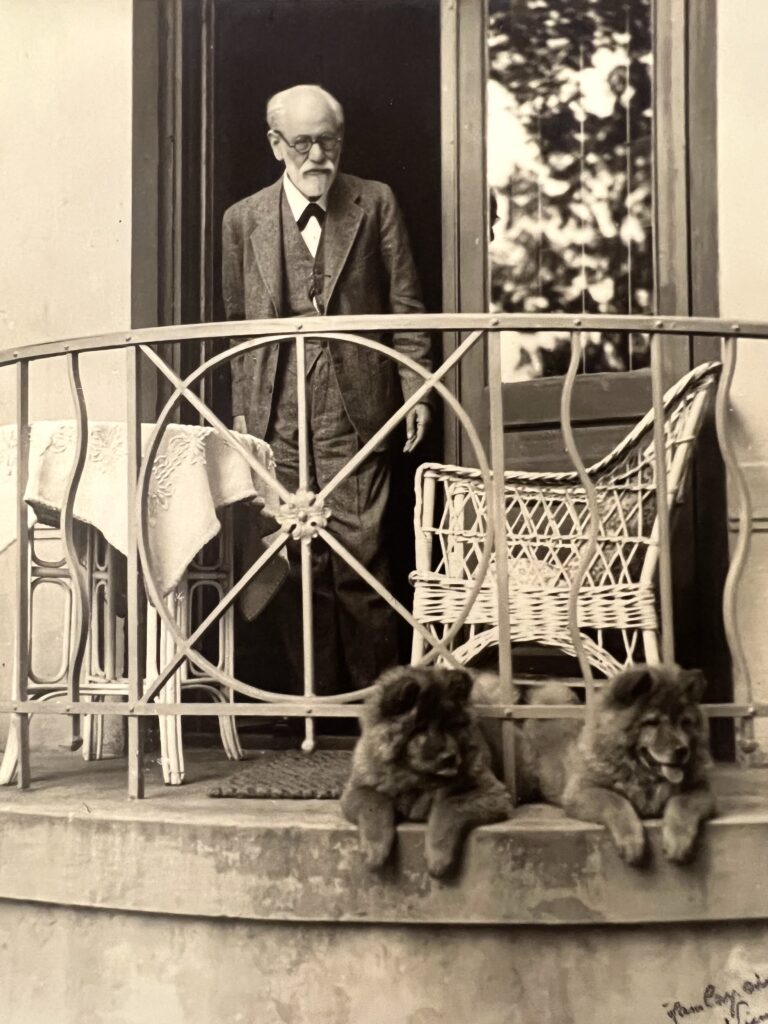
Freud left Vienna, very reluctantly, when Anti-Semitism was at its peak. He was 82 years old, ill from oral cancer, and didn’t want to go. Plus, he had been somewhat blind to the mounting danger.
He fled only in the 11th hour after his daughter Anna was interrogated by the Gestapo. If he hadn’t had helpful clients and cash to pay his way out, he might have been a victim of the Holocaust.
Freud died in London, his new home, on September 23, 1939. Some theorize that it was a legally assisted suicide from a lethal dose of morphine.
In the museum, there are ample information panels telling you about his childhood, life, family, and the fundamentals of his practice and research. Freud’s sixth and last child, Anna, was also a psychologist and donated many items to the museum.
>>> Click here to book a guided Sigmund Freud themed walking tour
Guide To The Freud Museum: What To See
Here’s what you will see on a visit to Vienna’s Freud Museum.
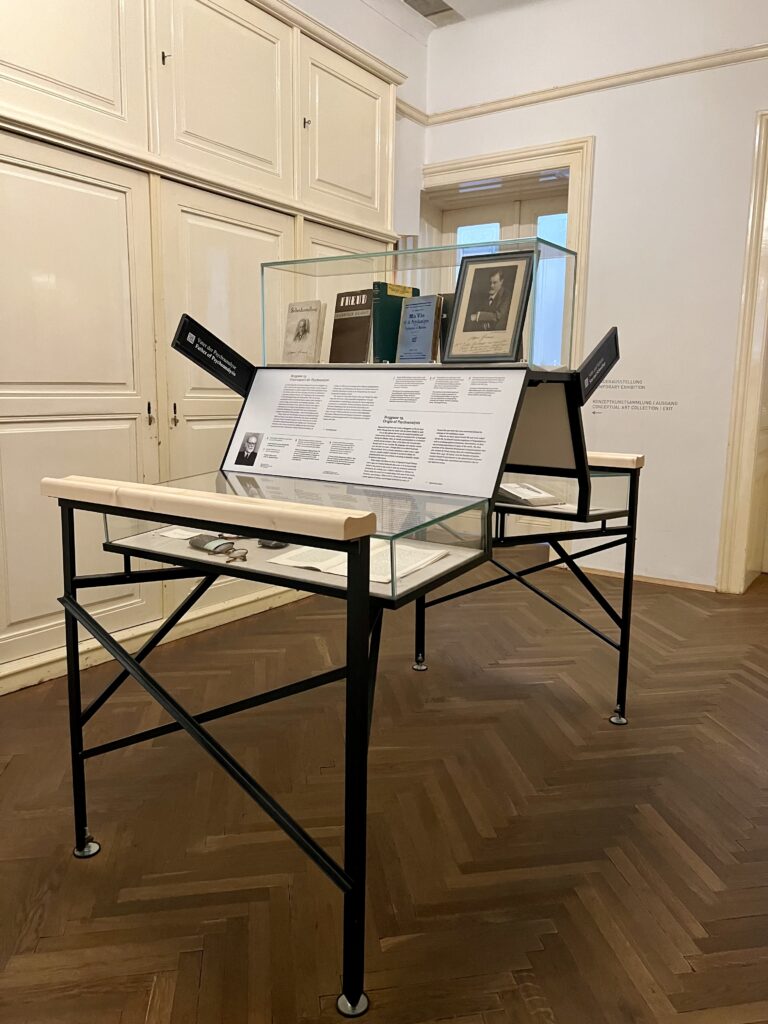
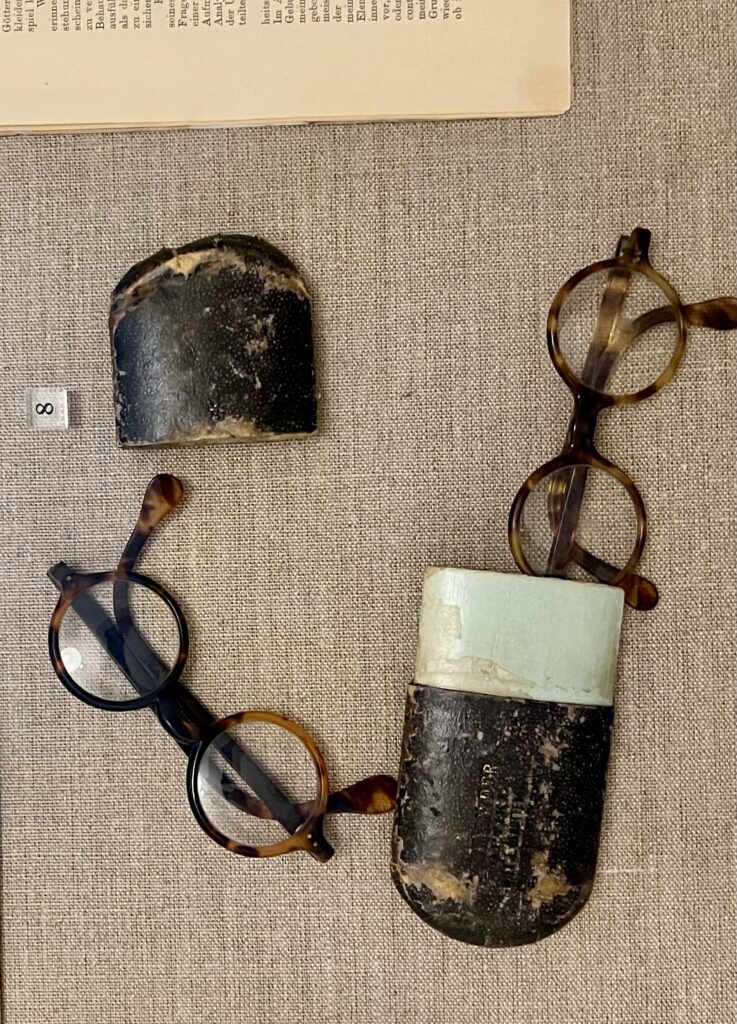
Family Apartment
Entrance Hall
This room served as the entrance area for all guests visiting Freud’s apartment. Here, you’ll uncover details about Freud’s early childhood.
There’s extensive information about Freud’s parents. And you’ll learn that he had complex relationship with his mother. It’s worth noting that he couldn’t attend her funeral due to illness.
Freud’s relationship with his mother is believed to have influenced his development of the Oedipus Complex, a concept involving a child’s desires for their opposite-sex parent and rivalry with their same-sex parent.
You’ll also find Freud’s eyeglasses on display in this room. Additionally, there’s a beautiful garnet medallion featuring photos of his children, adding a personal touch to their story.
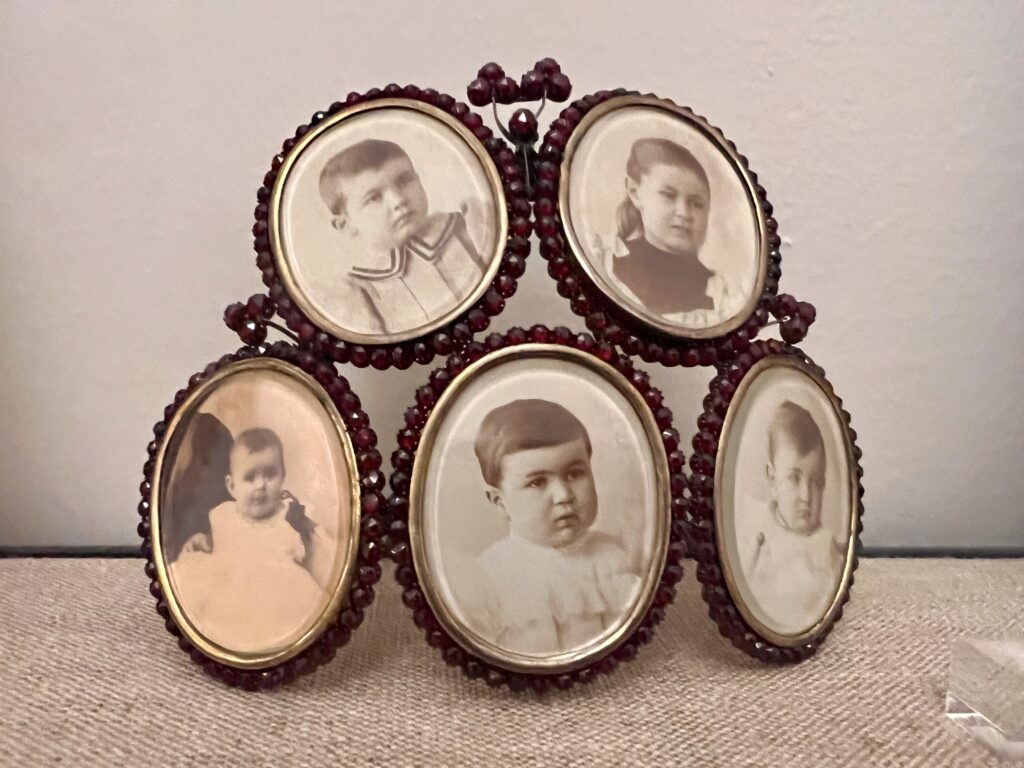
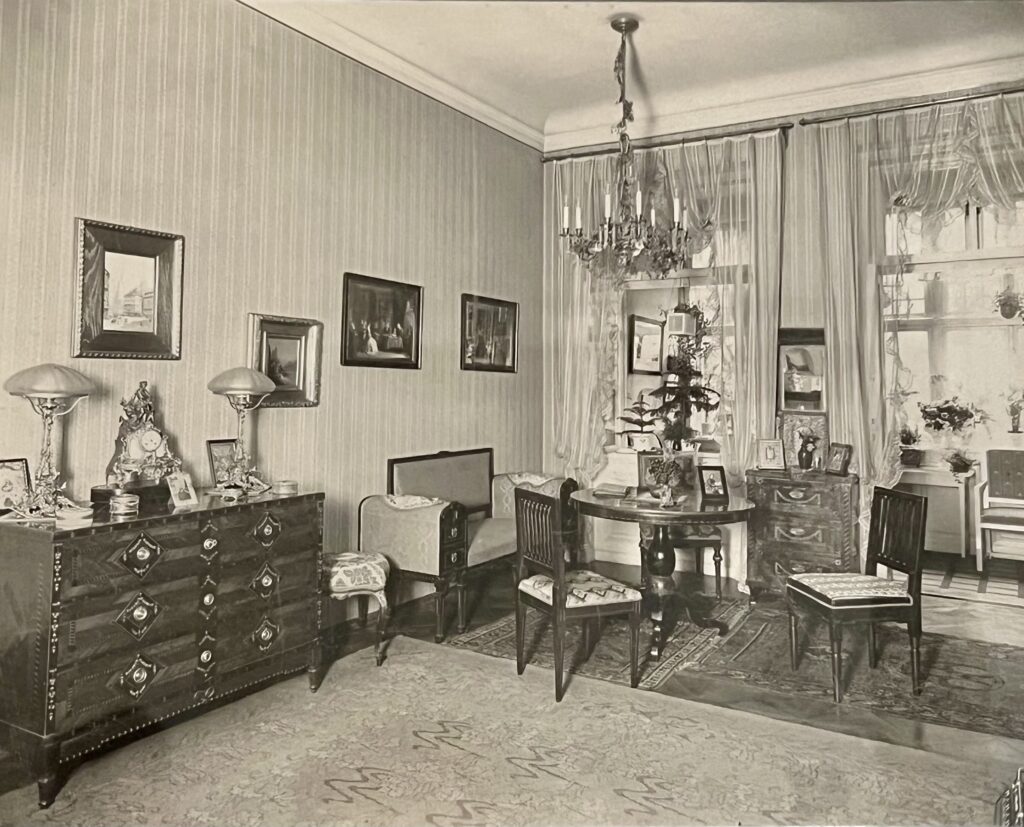
Gentleman’s Salon
The Gentleman’s Salon was essentially a drawing room for social occasions. It was also referred to as the smoking room, and Freud was very fond of cigars. It was once furnished with simple furniture, plants, and pictures.
A veranda overlooks the courtyard, once filled with chestnut trees. Two photos of the room from 1910 have survived and are on display.
Many of Freud’s possessions are shown as well. You can see his magnifying glass, which he always carried with him. You’ll also see his battered travel suitcase and a games box.
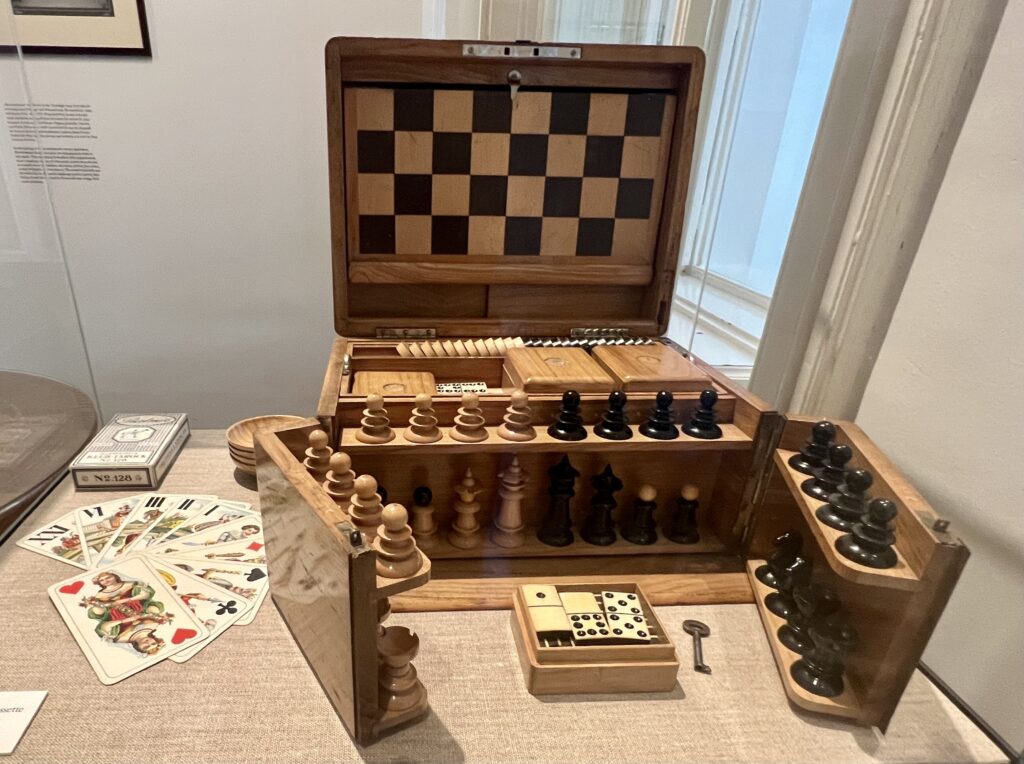
Traveling was one of Freud’s great passions. I didn’t know that he, like me, had a serious travel bug before visiting the museum. He went to places like Greece, Tuscany, Umbria, Pompeii, and Rome.
Rome was the place he visited most often. He was fascinated with the history of Ancient Rome.
He was also singularly obsessed with Michelangelo’s statue of Moses (in St. Peter in Chains Church). On trips to Rome, he would visit it daily. Freud even wrote an essay about the sculpture.
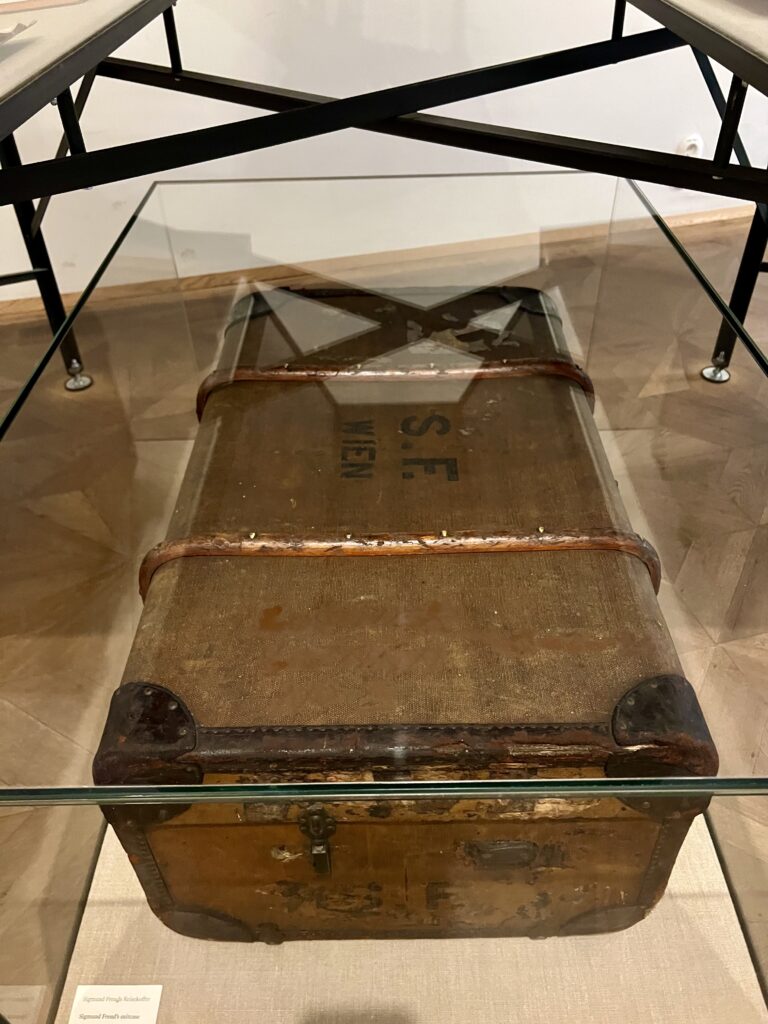
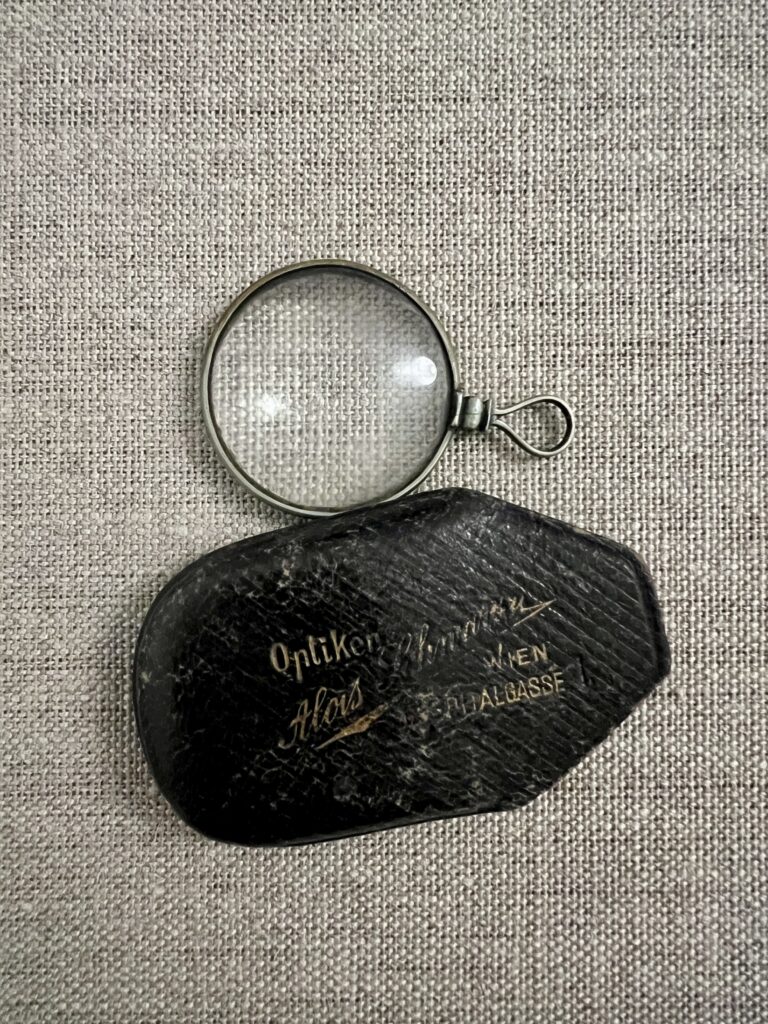
Bedroom
This was the room where Sigmund and Martha slept. It seemed odd for a bedroom to me. There are four sets of doors connecting it to other rooms, so not exactly private.
Apart from sleeping, Freud dreamed here. 50 of the 200 dreams discussed in his founding treatise The Interpretation of Dreams were his own. And you can see an original first edition copy of what is considered Freud’s most important work.
Also on display are Freud’s cigar cutter and box and his brown leather doctor’s bag.
Minna’ Bedroom
This room, for a time, was occupied by Freud’s sister in law. There are displays on hysteria, seduction theory, and the cathartic method.
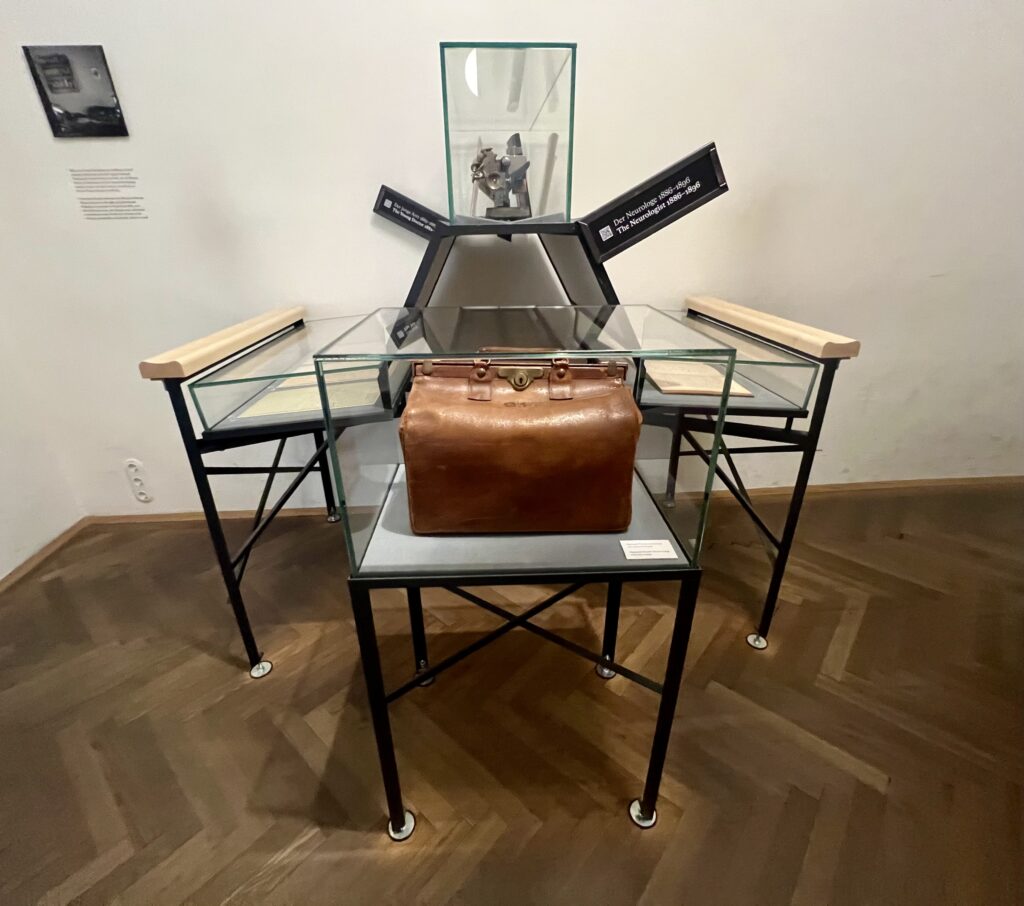
Bathrooms and Wardrobe
In 1938, this room was divided into a dressing room, bathroom, and two separate WCs. The Freuds were apparently very happy with the renovation.
You’ll find a display on Freud’s Three Essays on the Theory of Sexuality. And you’ll see a rare copy of the 1905 first edition of the book and a photo of Freud when he was 50.
There’s also a detailed exhibit on all of Freud’s family members with photographs.
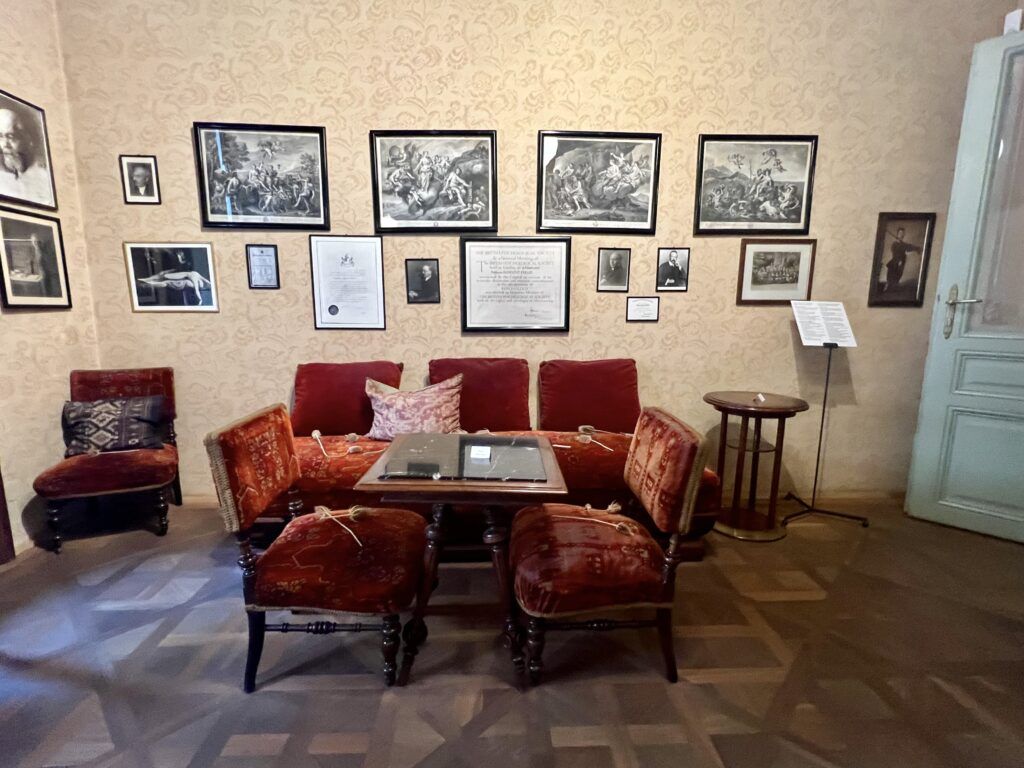
Practice Areas
Waiting Room
This is where Freud’s patients waited for their sessions on a plush red couch. They might come up to 6 times a week!
There is original period furniture here, complete with pictures that once hung in the room and Freud’s degrees.
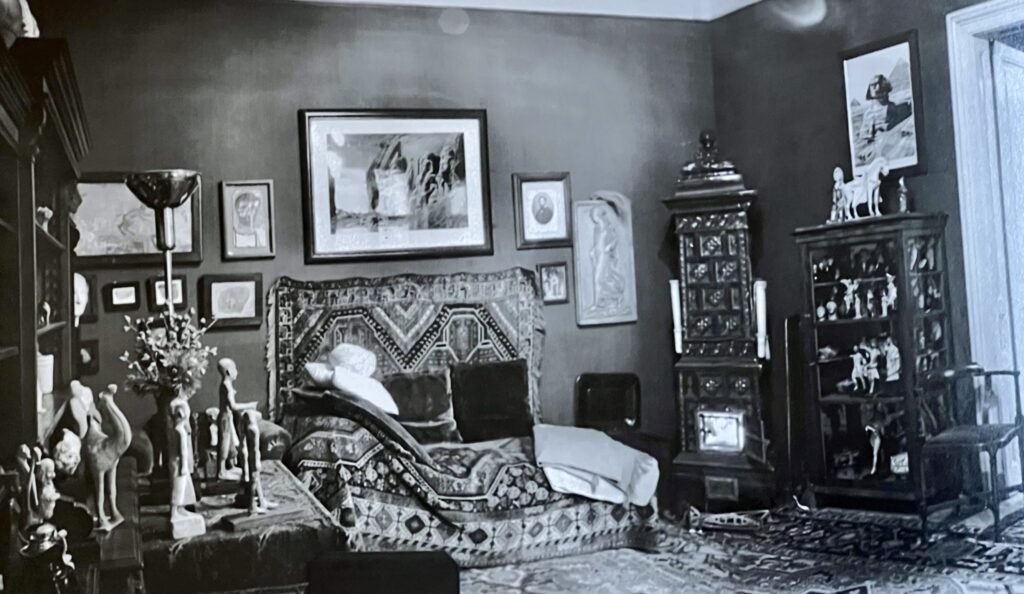
Patient Consultation Room
This room served as Freud’s consultation space, where he met with patients. Regrettably, the iconic consulting couch, where patients once reclined and shared their innermost thoughts, is not found here — it’s in the Freud Museum in London.
However, photographs offer detailed images of the couch and room. The couch itself was a simple yet functional piece, spacious enough for patients to recline comfortably. It was covered with a Persian Qashqa’i rug and embroidered pillows.
On the wall behind it hung a sizable rug. Everything was in strong warm shades, creating a “sacred silence” for his patients. This is where Freud also displayed his collection of antiquities, which you can see in a glass case, and his library.
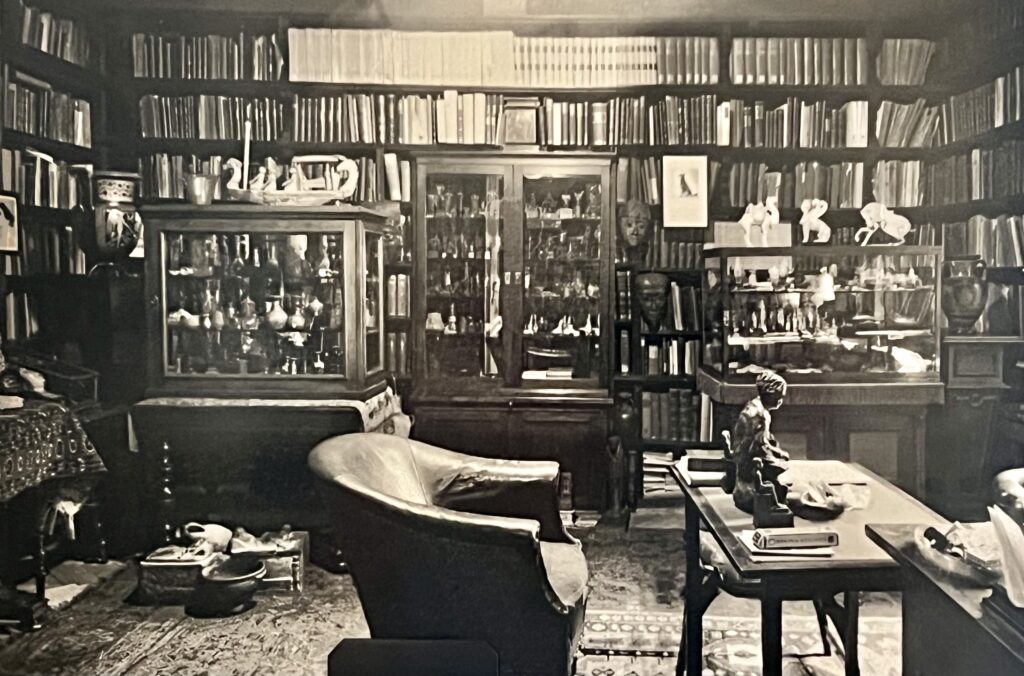
Freud’s couch has come to represent the practice of psychoanalysis itself. It’s undoubtedly one of the most famous pieces of domestic furniture in the world.
The exhibits in this room give you insights into Freud’s most famous case studies and the fundamental principles of psychoanalysis (id, ego, superego). Additionally, on display is Freud’s own pocket watch and inlaid letter box.
Walk-Through Room
This was a room where Freud’s patients could discretely exit the consultation room. Later, it was used as a nursery when Freud was ill and as Anna’s waiting room.
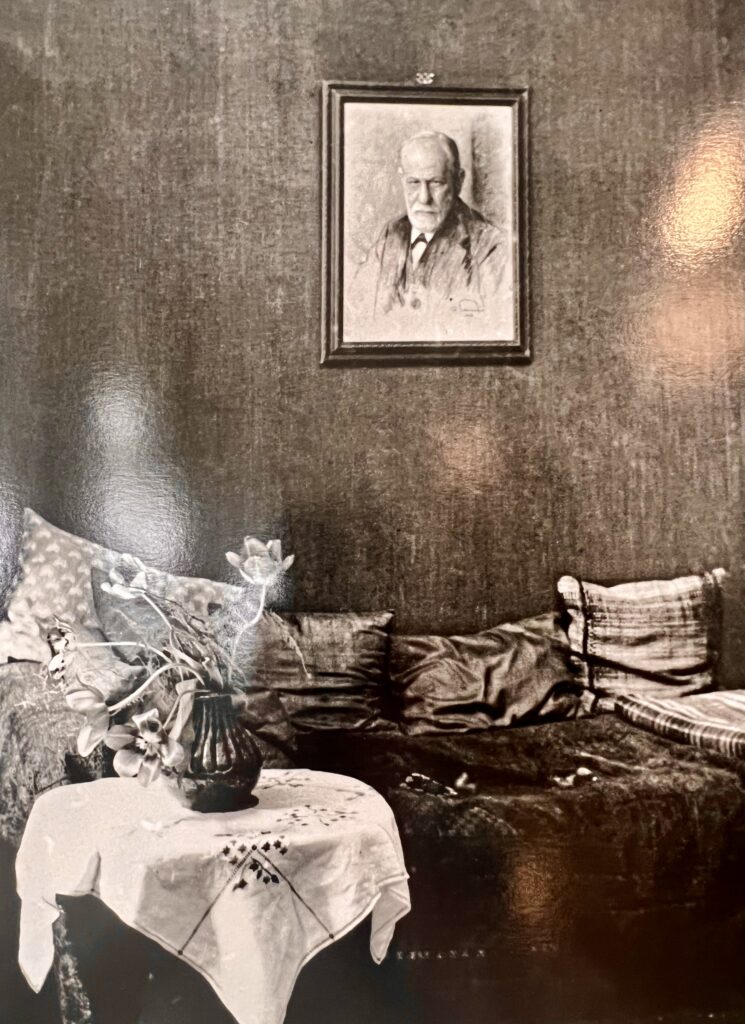
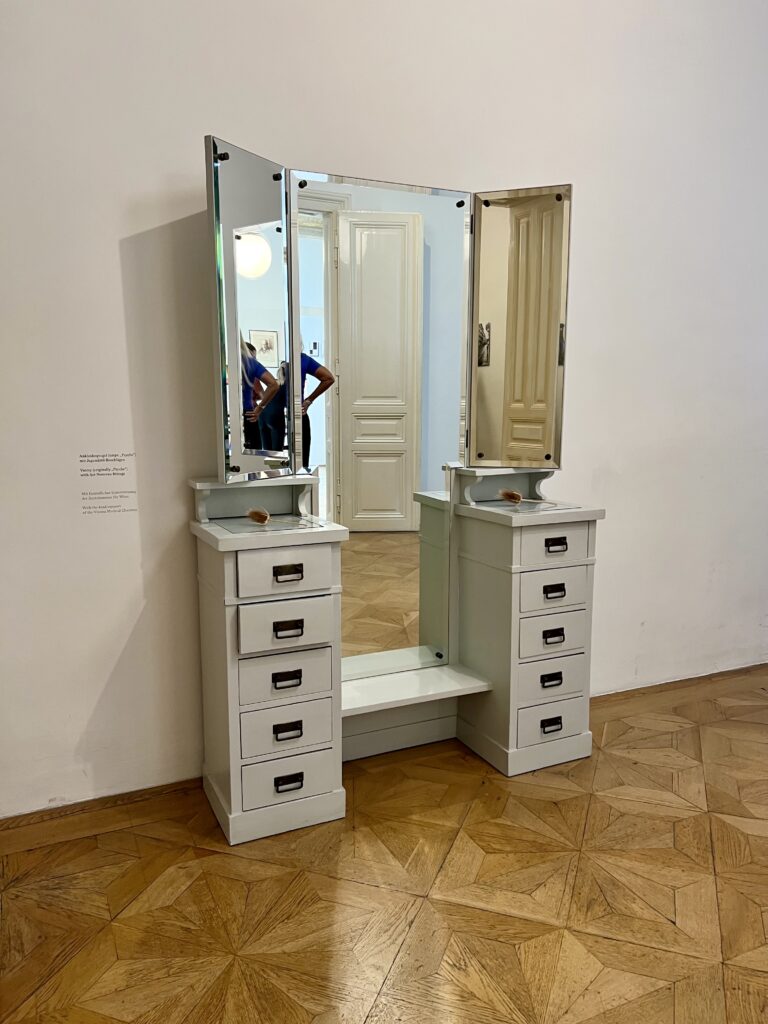
Anna’s Bedroom & Treatment Room
In 1921, Freud’s daughter Anna took up residence in these two rooms.
The bedroom was filled with light toned furniture. You can still see a beautiful Art Nouveau vanity with a full length mirror, which was called Psyche.
Anna began practicing in the mid 1920s. She saw both adults and children, and was a founder of the field of child psychoanalysis.
The room was decorated much like Fred’s treatment room, with the same shade of red wallpaper. Her couch was covered with an oriental rug. Above it was a painting of her father.
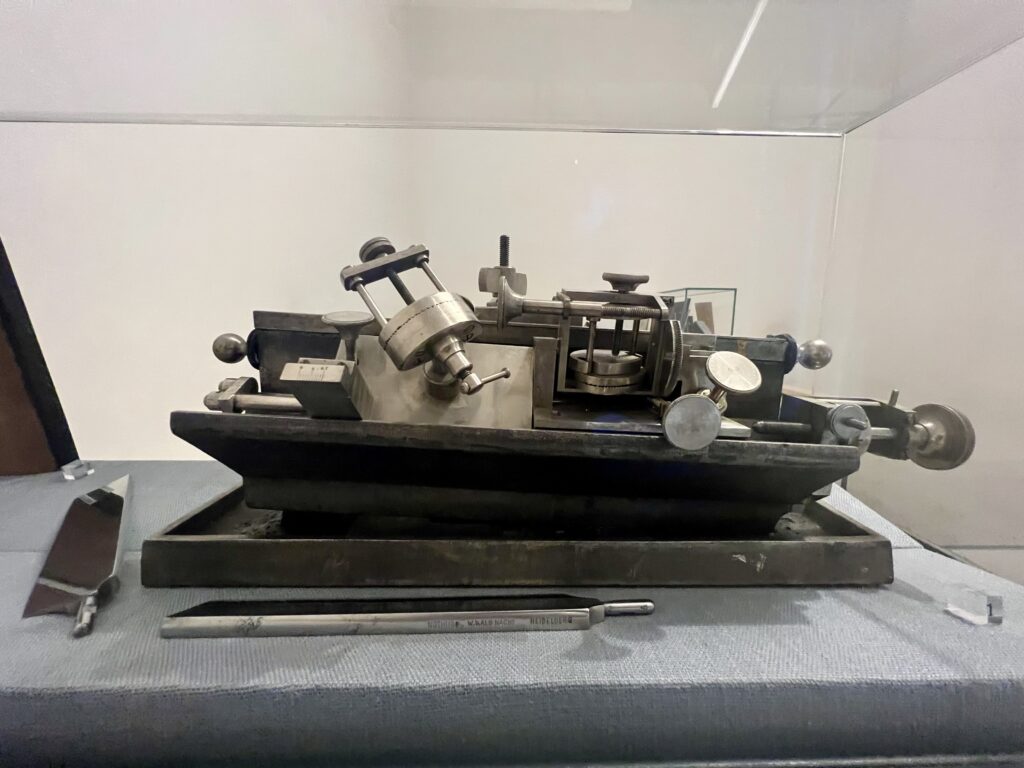
Freud’s Private Study
Freud’s private study was where he wrote many of his most important works.
You’ll find an extensive collection of documents, photographs, and personal belongings once owned by the renowned psychoanalyst.
Among these items, you can discover a bust of Freud, a remarkably well-preserved chair from his original study, and his personal microtome (a precision instrument for producing accurate histological cuttings for microscoping).
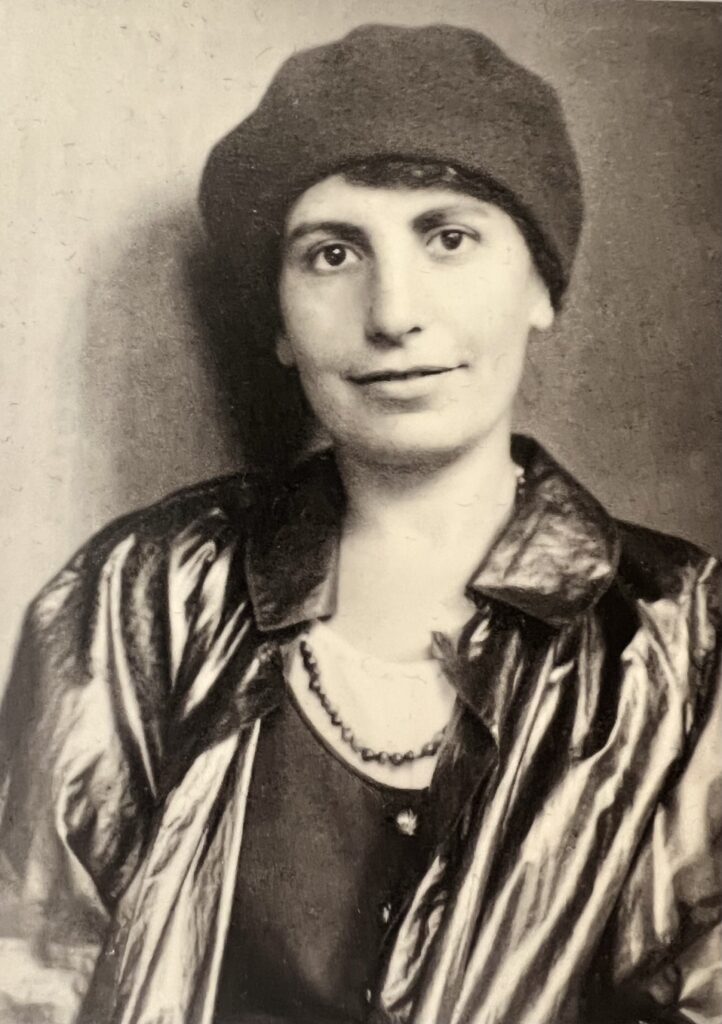
Practical Guide & Tips For The Freud Museum
Here are some things to know for visiting the Freud Museum.
Address: Berggasse 19. The nearest subway is the U2 line to Schottentor.
Hours: Open Wednesday through Monday from 10:00 am to 6:00 pm. Closed Tuesday.
Tickets:
Entry is 14 euros. Click here to pre-book a ticket.
The museum is also included in the Vienna Pass. And you may also want to book a Sigmund Freud walking tour in Vienna.

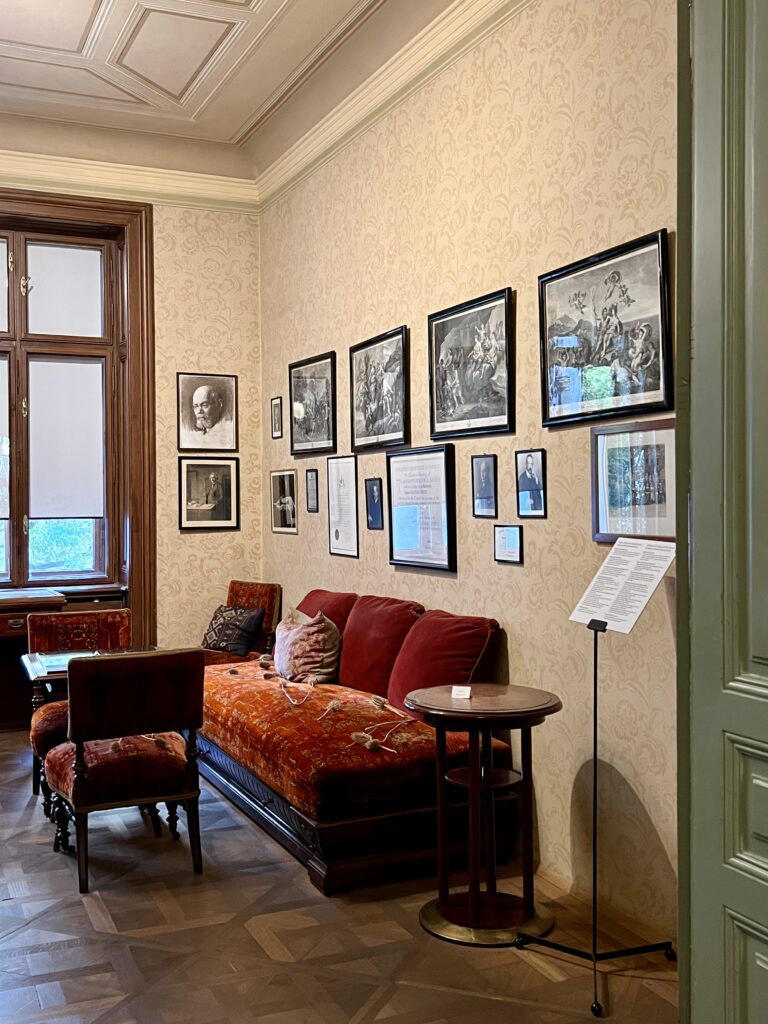
How Long To Spend:
This completely depends on how much information you want to read. I would say a minimum of 1 hour. History buffs may need 2-3 hours.
Is the Freud Museum Worth Visiting?
It’s definitely worth visiting if you’re a Freud enthusiast and want to experience his world and see where he lived.
Keep in mind that the museum doesn’t have many of his personal belongings since Freud took them to London. So, it’s not as immersive as the museum in London. Nonetheless, there are still plenty of interesting curios to see.
Compared to other small house museums in Vienna (like the Mozarthaus), I found this one to be better and thoughtfully arranged.
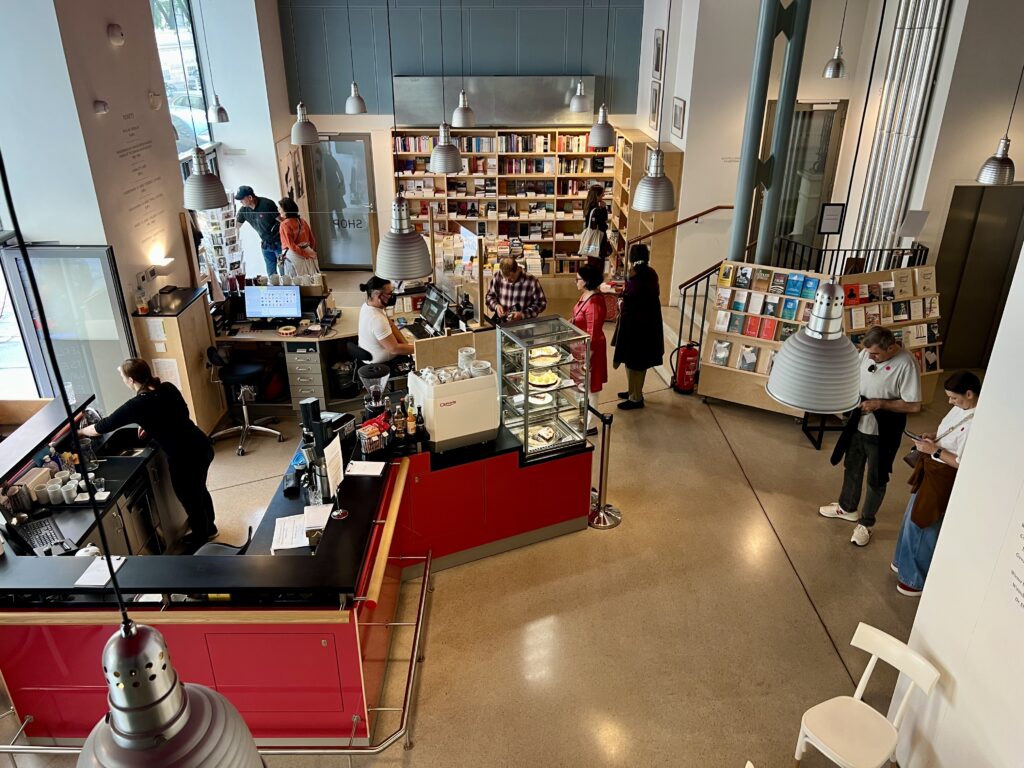
Pro Tips: there is a small shop and cafe at the entry level.
I hope you’ve enjoyed my guide to the Freud Museum in Vienna. You may find these other Vienna travel guides and resources useful:
- 3 days in Vienna itinerary
- guide to the Belvedere Palace
- guide to Klimt paintings in Vienna
- guide to the Beethoven trail in Vienna
- what to do in Vienna in winter
- best museums in Vienna
- guide to the Sisi Museum
- guide to the Kunsthistoriches
- guide to the Vienna Secession
- guide to the Albertina Museum
If you want to visit the very birthplace of psychoanalysis, pin it for later.

